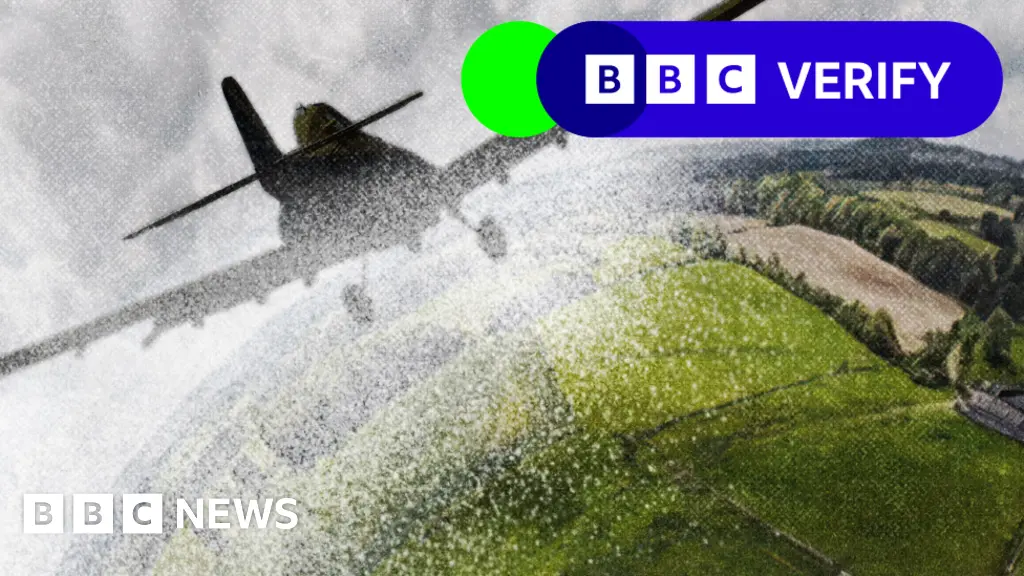This is the best summary I could come up with:
Much of June experienced temperatures about 2C (35.6F) lower than average, external, due to colder air coming from the Arctic.That was reversed in the last week of the month as warmer air moved in, bringing the UK temperature closer to normal, but still 0.4C colder than average.Combined with one of the wettest winters in recent years, this has left many wondering what is going on with the British weather.But not all possible explanations circulating on social media are grounded in scientific evidence.
It alleges that the government is supposedly controlling both weather and climate for sinister purposes.Variations of this narrative have been circulating online for years, but in the aftermath of unusual weather events it tends to resurface on all major social media platforms.By using social media analytics tools, BBC Verify found that conversation around these topics has been gaining momentum this year.
The most well-known form of weather modification is cloud seeding - a technique through which tiny particles are released into existing clouds to produce rain or snow.Cloud seeding has been around for decades, and has been deployed in places like the US, China and the United Arab Emirates, mostly to help tackle water shortages.On social media, some users have claimed that high levels of rainfall across the UK could only be explained by the deployment of cloud seeding on an industrial scale.This is false.On a rapidly warming planet, warm air is able to hold more moisture, which in turn fuels more intense rainfall.Climate change may not be the only factor behind the UK’s waterlogged winter, but it has certainly played an important role in it.While the UK government funded cloud seeding experiments in the 1950s, external, the Met Office says it is not aware of any activity connected to weather modification taking place in the UK in recent years.In addition to that, cloud seeding can only have small, targeted impacts.
It does not affect long-term weather or the climate.That is where the idea of geoengineering comes in.Geoengineering is an umbrella term most commonly used to describe attempts to manipulate the environment, with the goal of reducing the effects of climate change.Under current climate policies, the Earth is likely to heat up by more than 1.5C in the next few decades, breaching a key climate threshold.As the clock ticks away, some scientists believe governments should be looking into alternative methods of cooling the Earth.This could involve capturing and removing greenhouse gases from the atmosphere - something the UK is actively researching.But there is no evidence to suggest that removing gases like carbon dioxide has any impact on short-term weather.
Many of these users were also found to frequently tweet about “chemtrails”, a widely debunked conspiracy theory about a secretive plot to spray people with dangerous chemicals.The Royal Meteorological Society condemns the abuse weather forecasters have been receiving - which, it says, can have chilling effects.“We work very closely with young scientists to encourage them to share their science with the public,” says Prof Liz Bentley, chief executive of the Royal Meteorological Society.
“But they are fearful of the trolling that might take place.”Others argue that it may also affect research into geoengineering, as potential donors may be reluctant to put their money into projects the public may perceive as “controversial”.“A lot of funders are very sceptical of funding research,” says Dr Ramit Debnath, an assistant professor at the University of Cambridge, who investigated how online conversations about geoengineering have been hijacked by conspiracy theories.“It’s this whole idea that someone is trying to control our natural resources, our environment - and that, through that intervention, we are trying to control or take away people’s freedom,” he says.
The original article contains 886 words, the summary contains 608 words. Saved 31%. I’m a bot and I’m open source!
Of course if Ming The Merciless was behind all this they’d definitely tell us, wouldn’t they? 😉
Hot Hail!





